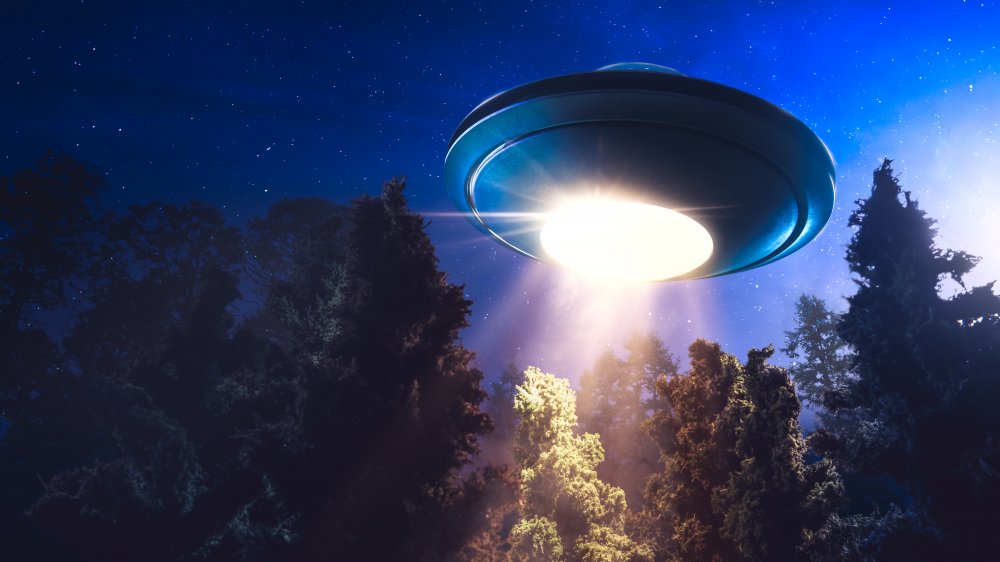The Truth About Steven Spielberg's Lost Feature Film
One of the most successful Hollywood directors of all time, with classics such as Jaws, E.T. The Extra-Terrestrial, and Jurassic Park under his belt, Spielberg has formed quite a legacy. Fans would undoubtedly be interested in viewing his first feature, if only to see just how far the movie legend has come. The catch is, Spielberg's earliest film doesn't exist anymore.
That's right: Young Steven's film debut — a 135-minute sci-fi adventure film titled Firelight (1964) — is lost to the ages. Filmed at the age of 17, the extremely indie feature was written and directed by Spielberg on a budget of $500 (equivalent to $3,771 today, per No Film School). In fact, most of the budget for Firelight came from family and friends' contributions. Spielberg worked well with the financial restrictions, casting his sister Nancy in a major part and filming scenes on-location at both the local Arcadia High School and his family home. He also composed the music himself on the clarinet, with his mother transposing the score to sheet music so that the Arcadia High School marching band could perform the final score for the film.
One Hollywood studio's big mistake
The distribution of the original film was extremely limited, as the movie was only screened once at the local Phoenix Little Theater. According to Inside The Actor's Studio, the screening for an audience of 500 raked in a profit of $1. "We charged a dollar a ticket," Spielberg said. "Five hundred people came to the movie and I think somebody probably paid two dollars, because we made one dollar profit that night, and that was it."
A few years after the initial screening of Firelight, Spielberg sent a few reels of the film to a producer in Los Angeles to showcase his filmmaker abilities. It was when the production company shut down, still in possession of the original prints, that the reels vanished for good. That's quite a shame, as a Spielberg-directed film surrounding a group of UFO investigators, mysterious disappearances and aliens attempting to create a human zoo sounds like a perfect date night watch.
The most complete version of the film is only three minutes long, roughly 3% of the complete sci-fi epic. While elements of the film were later incorporated into his 1977 sci-fi film Close Encounters of The Third Kind, there are no complete copies to date of the 1964 original, according to No Film School.

